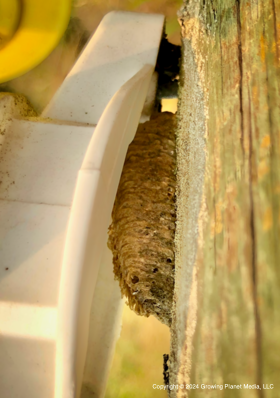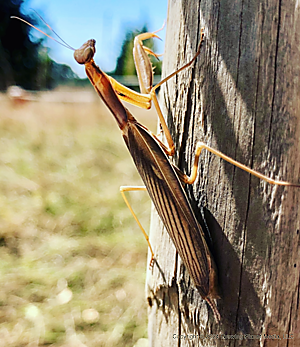Predators in the Bee Yard: The Mantis

I have to admit, my gateway insect to the world of beekeeping wasn’t the honey bee. It wasn’t even the ants I followed as they made their way through my mother’s rose garden, although ants’ social behavior fascinated me. No, the insect that first caught my imagination was the mantis – that dangerous, stalking predator with a taste for bees.
Often called the "praying mantis" due to the way it holds its large, spiked front legs as though in prayer, this insect is part of the Mantodea order, which includes around 2,400 species worldwide. While it might surprise you, their closest relatives are termites and cockroaches – not something you’d expect when you’re staring into the large, calculating eyes of a mantis.
You’ll find mantises across the globe in temperate and tropical climates, hanging out in fields, gardens, and—yes—bee yards like mine.

Now, before you worry, a mantis isn’t dangerous to you. They don’t bite or sting, and they aren’t poisonous. However, their head movements can be a bit unnerving as they track you with their large, compound eyes. Their black "pupils" give the eerie impression that they're watching you closely, but what you’re seeing is actually a pseudopupil—a result of light reflecting off their eye facets. When threatened, mantises can put on quite the show: they’ll rear up, spread their wings, and flash two large false “eyes” on the insides of their forelegs to make themselves look bigger. I’ve had them strike at me, and as an adult, it is thrilling!

In the bee yard, a mantis might position itself near the hive entrance, waiting for bees to return from foraging. With lightning speed, it’ll snatch an unsuspecting bee right out of the air, holding it in its spiked grasp for a quick meal.

Now, if only I could train a mantis to go after varroa mites or small hive beetles!















